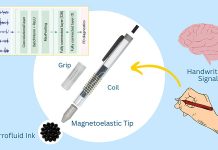
More than 55 million people worldwide were living with Alzheimer’s disease in 2020, according to Alzheimer’s Disease International.
This figure is expected to almost double every 20 years, reaching 78 million in 2030 and 139 million in 2050.
In 2021 the WHO Global Status Report estimated the annual worldwide cost of dementia as over $1.3 trillion and anticipated to rise to $2.8 trillion by 2030.
In a study from Bar-Ilan University in Israel, scientists found how to achieve early diagnosis and treatment of Alzheimer’s disease.
They found a different approach to pinpoint and treat the earliest, pre-symptomatic signs of Alzheimer’s disease.
Showing promise in stopping the progression of the disease before the onset of irreversible brain cell damage, this groundbreaking approach has garnered strong attention in the scientific world.
In Alzheimer’s disease, a small protein known as amyloid beta misfolds to intermediates that aggregate into larger structures known as fibrils and plaques.
Because plaques are visible under a microscope, scientists long believed that they are responsible for damaging neurons in Alzheimer’s disease.
Many clinical trials tried to target and prevent the formation of plaques. But such treatments proved unsuccessful and caused intolerable side effects.
In the current study, the team developed small abiotic and drugable cyclic peptides that have proven effective in animal models in diagnosing the early pre-symptomatic stage of Alzheimer’s and treating the disease.
These molecules were combined in a test tube with the small protein amyloid beta, and the generation of oligomers was completely blocked.
In the next stage, the researchers also successfully treated human neurons with toxic oligomers with cyclic peptides.
They also found that feeding worms with cyclic peptides strongly improved the survival of the worms and stopped the disease by preventing the formation of early toxic oligomers.
This suggests that the aggregation process can be stopped in the very early stages of the disease.
The team then successfully predetermined the onset of the disease before the formation of amyloid fibrils and plaques, and before the appearance of symptoms of Alzheimer’s disease.
Next, mice in the pre-symptomatic stage were treated with the cyclic peptides and observed over time for memory functions and the amount of amyloid beta oligomers in the brain.
the researchers found that the mice didn’t generate substantial amounts of oligomers and, consequently, didn’t develop any sign of Alzheimer’s.
The findings should that the new drug could halt the disease in its early stages, even before oligomers are formed.
The experiments have shown no sign of toxicity and that, unlike antibodies, the molecules cross the blood-brain barrier very well.
If you care about Alzheimer’s, please read studies about one important cause of Alzheimer’s, and blueberry supplements may prevent cognitive decline.
For more information about Alzheimer’s, please see recent studies that strawberries could help prevent Alzheimer’s disease, and results showing this stuff in your nose may trigger Alzheimer’s disease.
The study was conducted by Professor Shai Rahimipour et al and published in Proceedings of the National Academy of Sciences.
Copyright © 2023 Knowridge Science Report. All rights reserved.



